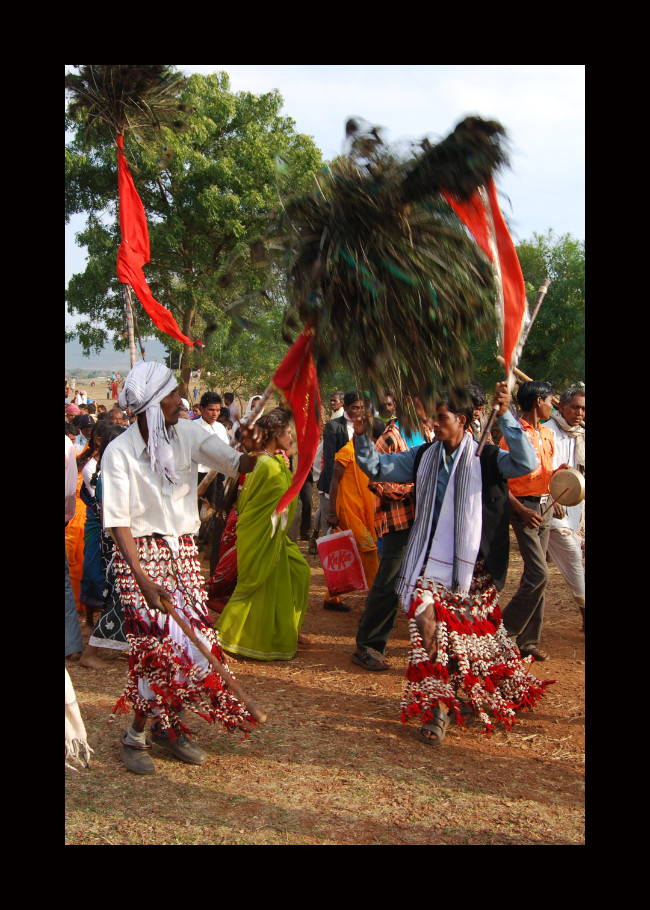Entry Fees : Rs. 20/- per Indian Visitor.
Rs. 400/- per Foreigner.
Camera Charges - Rs 100/- per Camera
 The Baiga community has been kept in the category of special backward tribe, because there have been comparatively less changes in their living conditions, beliefs etc. and their population is also very less. According to the 1991 census data, the total population of Baigas was 3,17,549 in Madhya Pradesh. Baigas mainly live in forest covered areas and hilly areas of Mandla, Dindori, Shahdol, Umaria, Balaghat and Amarkantak in Madhya Pradesh. The Baigas are believed to be an branch emerging from the Bhumia tribe of the Chhota Nagpur region.
The Baiga community has been kept in the category of special backward tribe, because there have been comparatively less changes in their living conditions, beliefs etc. and their population is also very less. According to the 1991 census data, the total population of Baigas was 3,17,549 in Madhya Pradesh. Baigas mainly live in forest covered areas and hilly areas of Mandla, Dindori, Shahdol, Umaria, Balaghat and Amarkantak in Madhya Pradesh. The Baigas are believed to be an branch emerging from the Bhumia tribe of the Chhota Nagpur region.
Baigas consider themselves servants of the earth and kings of the jungle. The settled villages of the Baigas came much later. It was a community that used to do Bevar i.e. farming without ploughing, cutting and burning the forest, making temporary houses in the forests, which used to go and settle in some other nearby forest after a few years.
According to the origin story of a Baiga, there was a big black rock in the midst of rippling water all around, from which a cluster of bamboo had grown. Baggins (female baiga) was born from one half of the bamboo and Baiga from the other. Baggins saw the land of ‘pataalwasi’ in his dream. Next day Baiga sent a 'Kariman' crow to explore the earth. The crow brought the earth and then the Baiga sprinkled the seeds of the earth in the water. Meanwhile, a girl and a boy had been born to Baiga-Baigan. They get off from the bamboo to the earth, but it was still unsteady. Baiga-Baggins understood that the earth would not be stable without worship, without paying the price. In order to sacrifice their own children, they kept them in a bamboo 'dhooti' and walked away. On the way, he met first cock-hen, then goat-she goat and then pig-she pig. Knowing their purpose, all the animals gave them its kids to offer to the earth, so that the human seed would remain on the earth. Baiga-Baigan got iron, copper and bronze nails made from Agariya, Tamasura, Kansasur communal brothers. Waking them up, he struck the nine pieces of nails on the ground, then worshiped the earth and by this way the earth became stable on the surface of the water.
The Baigas have five main gotras and they believe in a ‘garh’ (place of stronghold) or holy place and gotra symbol attached to each gotra. Baiga gotra or clan is called ‘jaat’ (caste). The social structure of the Baiga community is very systematic and well-functioning. A punchayat consists of Mukaddam, Diwan, Samarath, Kotwar and Dawar, have the right to settle all the disputes and other social matters etc. The Mukaddam is the headman of the village and the Davar is the village priest.
Various aspects of life of Baigas are related to the forest and they are dependent on it. The rituals of birth, marriage and death also include those things which are obtained from the forest only. Baigas are also good hunters and use many types of traps to catch various animals and birds. After the ban on ‘bevar’ farming, they have now started doing permanent farming with a half heart. At one time the Baigas used to grow many types of crops together, including Kodo, Kutki, Kangni, Madiya, Saama, Ratauni, Bajra, Kang, Silar, and pulses included Tuvar, Urad, Jhunjharu, Jhurga, Barbati etc. Now this biodiversity is slowly ending. New crops such as Rice, wheat, soybean etc. are now grown.
The costumes of Baigas living in the midst of lush green Sal (Shorea robusta) forests are very simple and often white. Baiga's sense of beauty has very seriousness, there is no scope for pompousness here. Baiga women are so fond of tattoos that they get very thick and elaborate tattoos on most part of the body. There is a special tattoo for each part of the body and the work of tattooing is done by the people of the Badi-Badanin community. Baiga men and women are very fond of dance and music. They dance whole night in Madai fairs. Baigani Karma, Saila, Bilma, Parghoni, Phag, Jharpat, Gendi etc. are their main dance forms.

As you enter a baiga house you may find a water pots called ‘padhenda’ in front of you and a big bamboo-clay pot ‘khoodari’ for keeping grains, pulses and salt, a ‘chulha-bartan’ (stove) on right side and some tools on left side in the house. In these houses, the workmanship of men on the wooden doors and door frames and the aesthetic sense of women shining in the clay on the walls is often seen.

Bajari, Mahtu Kodhkiya, Garjan Singh, Savni Bai, Ramrati, Rajkumari, Durgeshwari
Region – Mandla